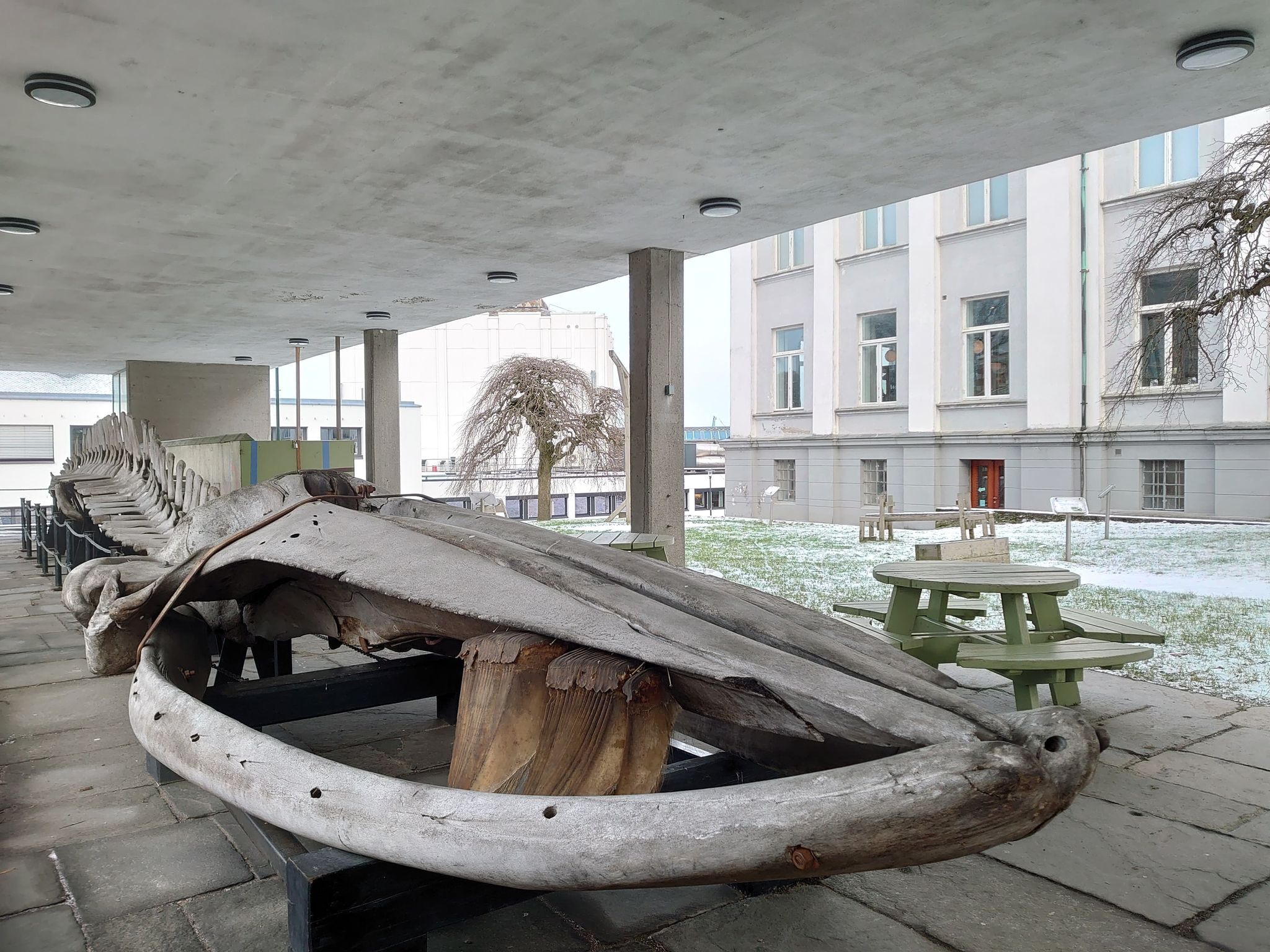The Whale
in the Garden
In the museum’s garden there is a large skeleton, and many people wonder if it is from a dinosaur. It is not. It is from the world’s second-largest living species, the fin whale (Balaenoptera physalus).
At present, only the blue whale beats the fin whale in size. While the fin whale can weigh up to 75 tons and grow to a length of 26 m, the blue whale can weigh up to 100 tons and grow to a length of 30 m. The fin whale has been known to reach 90 years of age, swim at the speed of 15 knots (30 km per hour) and dive as deep as 200 m. Since it is a mammal, it breathes with lunges instead of gills. It therefore needs to ascend to the ocean’s surface to breathe. It can hold its breath anywhere between 3 and 15 minutes at a time.
The fin whale has baleen instead of teeth. It uses the baleen to strain out (filter) food from the water. Its favourite food is krill (a tiny crustacean), but it also eats fish such as herring and capelin. In the summer months, the fin whale can eat up to three tons of food in a 24-hour period; in the winter it lives off of its store of blubber, eating only about 10 % of what it does in the summer.
There are three groups of fin whales in the world: one in
the Southern Hemisphere, one in the North Atlantic Ocean, and one in the North
Pacific Ocean. Due to having different annual migration patterns, these three
groups rarely meet. The North Atlantic group is densest between
Iceland and Greenland. These whales thrive in the open ocean, and very rarely
are they found along a coast.
The fin whale usually lives alone, but there may be several in an area with abundant food.

